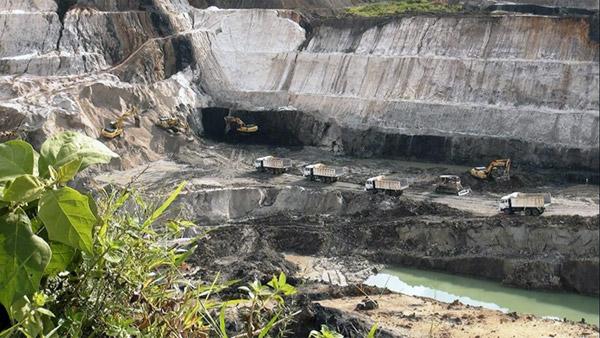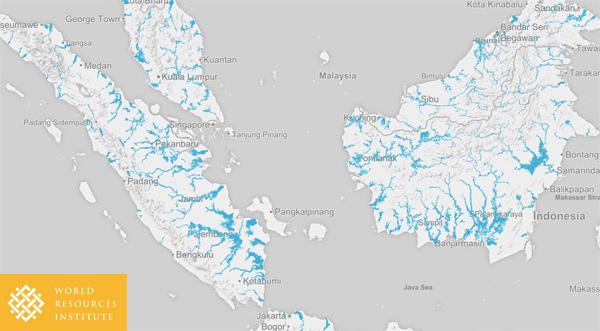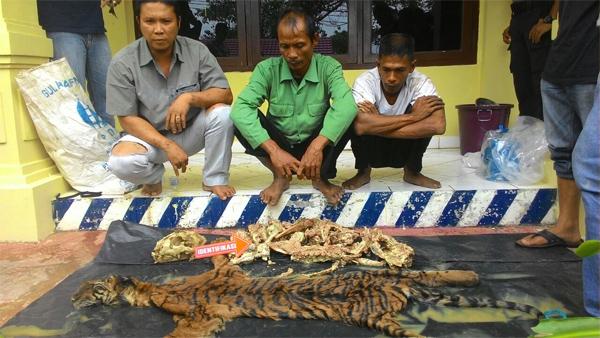Baharuddin should be happy. The rambutan and durian trees flanking his home are heavy with fruit. Two hectares of chilies stretch before his house. The price of chili — a staple commodity in Indonesia — has been stable for six months. From his 2,000 plants he hopes to earn 40 million rupiah ($3,400), much of which he wants to invest in expanding his crop. That is, if his farm can survive the threats that have destroyed so many of his neighbor’s.
“I would like to grow 10,000 chili plants,” he said with a smile, preferring to remain hopeful about the future, “and from them I can earn 100 million rupiah. I don’t want to work for someone else’s business.”
Baharuddin’s constant quest for better farming techniques has increased yields and improved profits for himself as well as his neighbors. He has established various organizations including the Young Farmers Group, which by 2007 had 28 members jointly managing 30 hectares of rice fields in Makroman, a village in the capitol city of Samarinda, East Kalimantan, Indonesia.
In addition to his chilies and rice, Baharuddin also developed a six hectare fish farm—the first in the province. During its peak production between 2004-2007 he was selling to buyers locally and regionally, bringing in 150 million rupiah ($12,500) each year. His success earned him a spot on the national TV show, “Si Bolang” — a moment he still has a hard time believing.
In fact, during the early 2000s, Baharuddin claims the area around Makroman was functioning at near optimum. Rice fields, gardens, fish farming, livestock and other agricultural businesses were all successful endeavors producing abundantly, and providing sustainable livelihoods for farmers and ranchers.
“From 1999-2006, Makroman was known as the center of rice supply for Samarinda.” Baharuddin remembers proudly. But, as the reality of the present weighs on him, his smile slowly fades.
Baharuddin watches for a moment as a mist of black dust drifts over his crop. Particles of coal from the mine next door will blanket his plants in a matter of days. He worries about where he will find clean water as the rivers become more polluted. The constant din of trucks and heavy equipment provides a stark contrast the pastoral scene of the early 2000s he has just been describing.
Mining Comes to Makroman
The mining company CV Arjuna arrived in Makroman in 2007 armed with permits issued form the city government of Samarinda. Their target: coal. The extent of their claim: 1,597 hectares in and around the villages of Sambutan, Makroman and Pulau Atas.
Initially, Baharuddin says, they mined on a small scale, hauling coal out in sacks. However, within a matter of months, excavators and heavy equipment appeared on the scene. They have been operating 24 hours a day since. During first year, the company’s subsidiary, PJP, produced 88,576 tons of coal. In their wake, they left a large gaping hole they refused to reclaim.
The villagers got their first glimpse of the environmental disasters to come when, in 2008, toxic waste leaking from an open tailings pond contaminated the rice fields and waterways of Makroman. Farmers and fisherman within several kilometers suffered grave losses. Production at Baharuddin’s fish farm plummeted as he struggled to keep his fingerlings alive. Combined income from his fish, farm, livestock and orchards dropped to less than 10 million rupiah ($850) per month.
As more mining companies arrived and began clearing the forests in the surrounding hills on a larger scale, flooding soon followed. In December 2010, rice fields were inundated with mud from the fist major flood, destroying that year’s crop. The farmers, recognizing the situation would only be getting worse, began demanding the local government revoke the mining permits. Their concerns were all but ignored.
Residents throughout the area now live day and night with the loud noise of heavy equipment while breathing the exhaust and coal dust pumped into the atmosphere. Mining pits butt against villages, carving into community land. As the nearby forests are razed, mice, monkeys, and other wild animals decimate crops in search of food. Flooding events have become more common and widespread, with the city of Samarinda flooded 150 times between 2009 and 2014. Mudslides routinely decimate fields and wash out neighborhoods.
Faced with plummeting yields and a shortage of clean water, many farmers have been persuaded to sell their land to the mining companies rather than struggle against them. However, what they make on the sale is usually gone within a year—leaving them with no money, and no land to earn a living from.
“There are two or three neighbors asking me for a job every day,” Baharuddin says, “So I hire them to help tend the garden, though I don’t know where the money will come from...”
The mining company has repeatedly offered to buy Baharuddin’s 10 hectares—one of the last holdouts of what was once a thriving agrarian district. He claims the company even offered to put him on their payroll if he turned over his land. “Just to join them, with no other responsibilities,” he said.
Baharuddin refused. As a public figure, he feels it is his responsibility to fight the injustice. For him, it is not about the money.
The High Cost of Coal
According to figures from the National Statistics Agency (BPS) from 2005-2010, the amount of land in Samarinda municipality used for agriculture decreased by an average of 340 hectares per year. By 2010 the area under cultivation was less than 35,000 hectares. Residential areas accounted for 6,000 hectares. Meanwhile, active mining permits totaled 50,736 hectares—an interesting figure, considering the total area of Samarinda is only 78,300 hectare.
From 2006-2010, mining accounted for only 6.3% of the GDP of Samarinda. And, although mining permits had tripled by 2009, the industry’s contribution to the GDP only increased 1% in 2010. At the same time, mining only employs some 6.8% of the population, providing very little economic benefit to the communities suffering the costs of extraction. The direct and indirect expenses caused by mining operations is staggering.
Carolus Tuah, director Samarinda-based activist organization Pokja 30, says that cost of controlling floods between 2008 and 2010 reached 107.9 billion rupiah ($9.1 million) with a large percentage of that coming from the province. Tuah claims the province shouldered the entire 2011-2013 flood relief budget—more than 602 billion rupiah ($50.9 million). At the same time, the constant traffic of heavily laden coal trucks beats apart the city’s roads. According to government data, the cost to repair the Samarinda’s roads topped 37.6 billion rupiah ($3.1 million) in 2011.
In addition to the environmental impact, the health effects of mining on the community of Samarinda are impossible to ignore. The constant presence of coal dust in the air has resulted in an epidemic of respiratory illness. According to government health figures, between 2011 and 2013 over 500,000 people suffered from acute respiratory infections, making it the most prevalent illness in the area. The 2010 census puts the population of Samarinda at only 726,000. Meanwhile, the health department warns that individuals living near the river are at high risk for diarrhea and skin disease due to the high water pollution levels.
A study conducted by the Women Empowerment and Family Planning Agency in East Kalimantan found that mining pollution not only caused increased childhood diseases, but also affected women’s reproductive health. The traditional daily activities of women keep them at home in the fog of coal dust and put them in frequent contact with contaminated water.
Since 2008, eight children in Samarinda have died from falling into unreclaimed mine pits. With their sights set on the next profit, mining companies have historically done very little, if anything, to close, restore, or otherwise mitigate the hazards of old pits before moving on. The gaping holes they leave collect rainwater and toxic runoff, and are often ringed by loose crumbling soil. Some pits are located a stones-throw away from residential areas making them a tempting draw for curious children.
A Quest for Justice
Fed up with the situation, and the government’s lack of action, the citizens group Samarinda Lawsuit Movement (GSM) took the issue to the court. They filed suit demanding that the mayor of Samarinda, governor of East Kalimantan, and other officials immediately act to save the city from ecological disaster. The 19 plaintiffs included farmers, flood victims, local NGO’s, and religious leaders.
After two years of litigation, the court ruled on July 16, that the defendants were negligent in their obligation to create a healthy living environment. The ruling is based on Indonesian Law 32 from 2009 on environmental protection and management.
Although the results are encouraging—showing the citizens of Samarinda they have another method to get the attention of government officials—the struggle remains.
The defendants have stated they will take the matter under consideration, and form an advisory committee to determine how best to proceed.
Meanwhile, the mining continues. The forests are leveled. The pollution seeps into the river. And Baharuddin shakes coal dust off his chili plants, hoping they will survive until harvest time—hoping he will survive to see the day when Indonesia values its people and its environment above greed and corporate profits.
REFERENCE: Yustinus S. Hardjanto and Rahmadi Rahmad. Fokus Liputan: Bencana Tambang di Samarinda. Mongabay-Indonesia. August 31, 2014
This article was originally written and published by Loren Bell, a contributing writer for news.mongabay.com. For the original article and more information, please click HERE.




